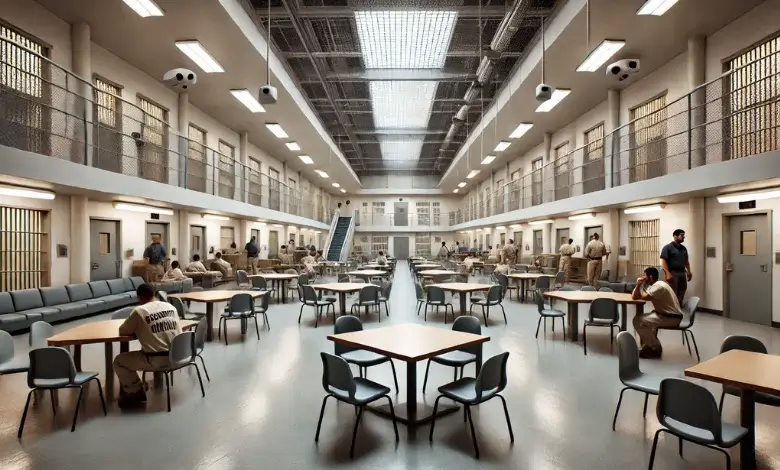Detention centers play a critical role in the justice and immigration systems of many countries, including the United States. These facilities serve as places where individuals are held temporarily while awaiting trial, deportation, or further legal action. But what are detention centers, and why are they so significant?
This article delves into the concept, purpose, and controversies surrounding detention centers, offering a comprehensive overview for readers seeking clarity on the question: What are detention centers and why do they matter?
What Is a Detention Center?
A detention center is a facility designed to house individuals who are in legal custody. Unlike prisons, which primarily focus on punishing convicted criminals, detention centers are typically used for short-term confinement. Individuals held in these centers may include:
- Immigrants awaiting decisions on their immigration status.
- Pre-trial detainees who have been arrested but not yet convicted of a crime.
- Asylum seekers undergoing screening or awaiting asylum hearings.
The primary purpose of detention centers is to ensure that individuals are available for legal proceedings and comply with court or immigration orders.
How Do Detention Centers Operate?
Detention centers vary in structure and management, depending on their purpose and jurisdiction. Some are run by government agencies, such as the U.S. Immigration and Customs Enforcement (ICE), while others are managed by private contractors.
- Screening and Intake: Upon arrival, detainees are typically subjected to a screening process to assess their medical, psychological, and security needs.
- Housing and Daily Life: Detainees live in communal settings, often with shared living spaces and limited privacy. They are provided with basic necessities, including meals, medical care, and limited recreational activities.
- Legal Access: Detainees usually have access to legal representation and may participate in hearings or interviews related to their case.
- Security and Oversight: These facilities maintain strict security protocols, including surveillance and routine checks, to ensure order and safety.
Types of Detention Centers
Detention centers come in different forms based on their purpose:
- Immigration Detention Centers: These facilities house immigrants who are awaiting deportation or asylum decisions. The U.S. operates over 200 such centers, many of which are criticized for overcrowding and poor conditions.
- Juvenile Detention Centers: These focus on minors who are awaiting court proceedings or serving short sentences.
- Temporary Holding Centers: Used for individuals arrested and held for brief periods, such as during protests or police operations.
Key Issues and Controversies

Detention centers are not without their challenges and controversies. Understanding these concerns is vital for informed discussions about their role in society.
Overcrowding and Poor Conditions
One of the most significant criticisms of detention centers is overcrowding, which can lead to inadequate access to food, medical care, and sanitation. For instance, a 2023 report by Human Rights Watch highlighted that many U.S. immigration detention centers fail to meet basic human rights standards.
Psychological Impact on Detainees
Extended detention can take a toll on individuals’ mental health. Detainees often experience anxiety, depression, and uncertainty about their future, especially in cases involving families and children.
Privatization and Accountability
Privately operated detention centers have come under scrutiny for prioritizing profit over detainee welfare. Reports suggest that these facilities may cut corners on services and resources to reduce operational costs.
Legal and Ethical Concerns
Many advocacy groups question the ethics of detaining asylum seekers and families. Legal experts argue that detention, especially for non-criminal immigrants, undermines principles of justice and human dignity.
Relevant Statistics and Facts
- According to ICE, approximately 31.183 individuals were held in immigration detention centers in 2024 on any given day.
- Over 70% of detention centers in the U.S. are operated by private contractors.
- The average cost of detaining an individual is about $165 per day, significantly higher than alternatives like supervised release programs.
Alternatives to Detention Centers
In recent years, policymakers and advocates have explored alternatives to detention centers, such as:
- Electronic Monitoring: Devices like ankle bracelets allow authorities to track individuals without physical confinement.
- Community-Based Programs: Nonprofit organizations provide housing, legal support, and resources to ensure compliance with legal proceedings.
- Supervised Release Programs: These involve regular check-ins and monitoring, offering a more humane and cost-effective solution.
Conclusion
Detention centers are a complex subject with legal, ethical, and social implications. Understanding what are detention centers, their function, and their challenges can help foster informed discussions and drive meaningful change. If you want to learn more about immigration policies, prison reform, or human rights advocacy, consider exploring related articles and guides available on our website.
Frequently Asked Questions (FAQ)
1. What are detention centers used for?
Detention centers are facilities where individuals are held temporarily while awaiting trial, deportation, or further legal actions. These centers play a role in the justice and immigration systems by ensuring individuals comply with legal procedures.
2. How can I find detention centers in my state?
You can search for detention centers in your state by visiting official government websites like the Department of Corrections or Immigration and Customs Enforcement (ICE). Many states also provide online tools to locate facilities and view inmate information.
3. What is the difference between detention centers and prisons?
Detention centers are used for temporary holding, primarily for individuals awaiting legal or immigration decisions. Prisons, on the other hand, house individuals who have been convicted of crimes and are serving their sentences.













